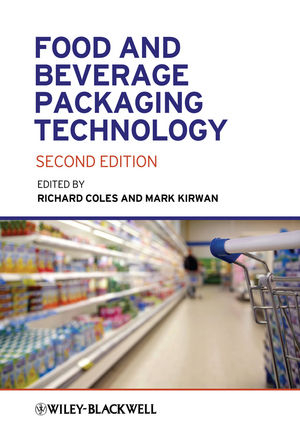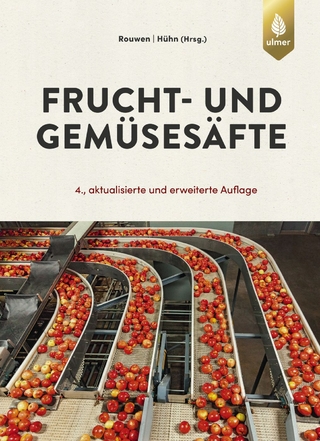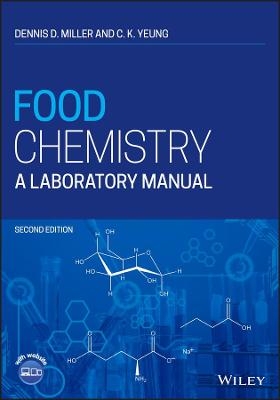
Food and Beverage Packaging Technology
Wiley-Blackwell (Verlag)
978-1-4051-8910-1 (ISBN)
- Titel z.Zt. nicht lieferbar
- Versandkostenfrei innerhalb Deutschlands
- Auch auf Rechnung
- Verfügbarkeit in der Filiale vor Ort prüfen
- Artikel merken
Key Features:
An up-to-date and comprehensive handbook on the most important sector of packaging technology
Links methods of food preservation to the packaging requirements of the common types of food and the available food packages
Covers all the key packaging materials - glass, plastics and paperboard
Fully revised second edition now covers sustainability, nanotechnology and RFID
Richard Coles is a Consultant in Food Packaging, based in London, UK Mark Kirwan is a Consultant and Lecturer in Packaging Technology, based in London, UK
Preface xiii
Contributors xv
1 Introduction 1
Richard Coles
1.1 Introduction 1
1.2 Packaging developments – an historical and future perspective 3
1.3 Role of packaging for enhanced sustainability of food supply 5
1.4 Definitions and functions of packaging 9
1.5 Packaging strategy 10
1.6 Packaging design and development 10
1.7 Conclusion 27
References 27
Websites 28
2 Food Biodeterioration and Methods of Preservation 31
Gary S. Tucker
2.1 Introduction 31
2.2 Agents of food biodeterioration 32
2.3 Food preservation methods 38
References 57
3 Packaged Product Quality and Shelf Life 59
Helen Brown, James Williams and Mark Kirwan
3.1 Introduction 59
3.2 Factors affecting product quality and shelf life 62
3.3 Chemical/biochemical processes 63
3.4 Microbiological processes 67
3.5 Physical and physico-chemical processes 70
3.6 Migration from packaging to foods 73
3.7 Conclusion 81
References 81
4 Logistical Packaging for Food Marketing Systems 85
Diana Twede and Bruce Harte
4.1 Introduction 85
4.2 Functions of logistical packaging 86
4.3 Logistics’ activity-specific and integration issues 89
4.4 Distribution performance testing 97
4.5 Packaging materials and systems 99
4.6 Conclusion 104
References 105
Further reading 105
5 Metal Packaging 107
Bev Page, Mike Edwards and Nick May
5.1 Overview of market for metal cans 107
5.2 Container performance requirements 107
5.3 Container designs 108
5.4 Raw materials for can-making 110
5.5 Can-making processes 113
5.6 End-making processes 118
5.7 Coatings, film laminates and inks 120
5.8 Processing of food and drinks in metal packages 121
5.9 Shelf life of canned foods 127
5.10 Internal corrosion 133
5.11 Stress corrosion cracking 133
5.12 Environmental stress cracking corrosion of aluminium alloy beverage can ends 133
5.13 Sulphur staining 134
5.14 External corrosion 134
5.15 Conclusion 135
References 135
Further reading 135
6 Packaging of Food in Glass Containers 137
Peter Grayhurst and Patrick J. Girling
6.1 Introduction 137
6.2 Attributes of food packaged in glass containers 139
6.3 Glass and glass container manufacture 141
6.4 Closure selection 147
6.5 Thermal processing of glass packaged foods 148
6.6 Plastic sleeving and decorating possibilities 149
6.7 Strength in theory and practice 149
6.8 Glass pack design and specification 150
6.9 Packing – due diligence in the use of glass containers 152
6.10 Environmental profile 153
6.11 Glass as a marketing tool 155
References 155
Further reading 156
7 Plastics in Food Packaging 157
Mark J. Kirwan, Sarah Plant and John W. Strawbridge
7.1 Introduction 157
7.2 Manufacture of plastics packaging 161
7.3 Types of plastic used in packaging 170
7.4 Coating of plastic films – types and properties 182
7.5 Secondary conversion techniques 185
7.6 Printing 187
7.7 Printing and labelling of rigid plastic containers 188
7.8 Food contact and barrier properties 189
7.9 Sealability and closure 192
7.10 How to choose 196
7.11 Retort pouch 198
7.12 Environmental and waste management issues 205
References 209
Further reading 210
Websites 210
Appendices 211
8 Paper and Paperboard Packaging 213
M.J. Kirwan
8.1 Introduction 213
8.2 Paper and paperboard – fibre sources and fibre separation (pulping) 215
8.3 Paper and paperboard manufacture 217
8.4 Packaging papers and paperboards 219
8.5 Properties of paper and paperboard 223
8.6 Additional functional properties of paper and paperboard 225
8.7 Design for paper and paperboard packaging 228
8.8 Package types 228
8.9 Systems 243
8.10 Environmental profile 243
8.11 Carbon footprint 247
References 249
Further reading 249
Websites 250
9 Active Packaging 251
B.P.F. Day and L. Potter
9.1 Introduction 251
9.2 Oxygen scavengers 252
9.3 Carbon dioxide scavenger and emitters 254
9.4 Ethylene scavengers 255
9.5 Ethanol emitters 256
9.6 Moisture absorbers 257
9.7 Flavour/odour absorbers 258
9.8 Lactose and cholesterol removers 259
9.9 Anti-oxidant release 259
9.10 Temperature-controlled packaging 259
9.11 Regulatory issues, consumer acceptability and equipment considerations 260
9.12 Conclusion 261
References 261
10 Modified Atmosphere Packaging 263
Michael Mullan and Derek McDowell Section A: Map gases packaging materials and equipment 263
10.A1 Introduction 263
10.A2 Gaseous environment 264
10.A3 Packaging materials 270
10.A4 Modified packaging atmosphere machines 276
10.A5 Quality assurance of map 283
Section B: Main food types 288
10.B1 Raw red meat 288
10.B2 Raw poultry 288
10.B3 Cooked, cured and processed meat products 289
10.B4 Fish and fish products 290
10.B5 Fruits and vegetables 291
10.B6 Dairy products 293
References 293
11 Bioplastics 295
Jim Song, Martin Kay and Richard Coles
11.1 Introduction 295
11.2 Definitions 297
11.3 Bioplastics and carbon 298
11.4 Bioplastics – overview of material types 299
11.5 Waste management options for bioplastics 310
11.6 Bioplastics – challenges for a growing market 316
11.7 Conclusion 317
References 317
Websites 319
Index 321
| Erscheint lt. Verlag | 5.4.2011 |
|---|---|
| Verlagsort | Hoboken |
| Sprache | englisch |
| Maße | 178 x 254 mm |
| Gewicht | 925 g |
| Themenwelt | Technik ► Lebensmitteltechnologie |
| Wirtschaft ► Betriebswirtschaft / Management | |
| Weitere Fachgebiete ► Land- / Forstwirtschaft / Fischerei | |
| ISBN-10 | 1-4051-8910-X / 140518910X |
| ISBN-13 | 978-1-4051-8910-1 / 9781405189101 |
| Zustand | Neuware |
| Haben Sie eine Frage zum Produkt? |
aus dem Bereich


